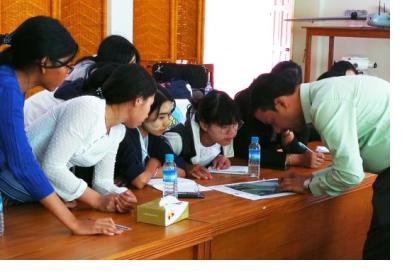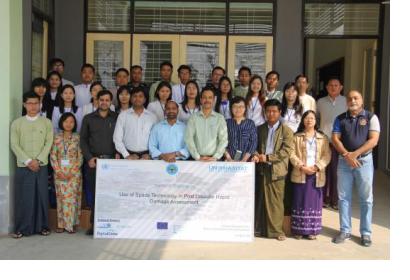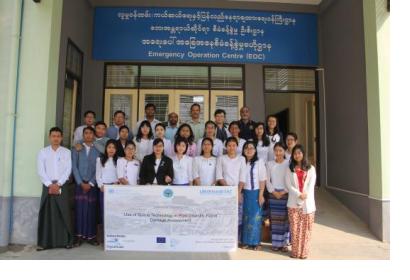As part of the technical advisory support it provides to countries worldwide, UN-SPIDER carried out an Institutional Strengthening Mission to Myanmar from 11 to 15 March 2019 upon the request of the government. This activity was jointly organized by UN-SPIDER and the United Nations Human Settlement Programme (UN-Habitat), under auspices of the Ministry of Social Welfare, Relief and Resettlement (MSWRR) of Myanmar. It was hosted by the Emergency Operation Centre (EOC). Experts from the Centre for Space Science and Technology Education in Asia and the Pacific (CSSTEAP), the International Centre for Integrated Mountain Development (ICIMOD) and Maxar contributed to the mission.
The mission was a follow-up activity to the UN-SPIDER Technical Advisory Mission (TAM) conducted in March 2012 that assessed the use of space-derived information in all aspects of disaster management and provided recommendations to strengthen the disaster risk management and emergency response in Myanmar. Before this follow-up activity, UN-SPIDER organized three such activities and offered capacity building programmes on “Geo-informatics for Disaster Risk Management in Myanmar” in November 2012, “Use of Earth Observation Data and GIS Techniques for Landslide Hazard Mapping” in June 2016 and “Post Disaster (Earthquake) Rapid Damage Assessment” in March 2017.
During the five-day mission, UN-SPIDER held a high-level advocacy meeting at ministerial level and carried out two training programmes, one for 25 officials of the Department of Disaster Management (DDM) of MSWRR and one for 25 officials from key line ministries.
The training for DDM staff provided an overview of the use of space technology in disaster risk management, the International Charter “Space and Major Disasters” and coordination during an emergency situation. The course strengthened the skills of EOC and DDM staff in analyzing maps and making use of emergency response maps produced as part of International Charter activations.
The training for officials from key line ministries was more comprehensive and covered a wide range of theory and hands-on session for using Earth observation technologies and tools for flood and earthquake disaster response.
The five-day-long institutional strengthening mission improved the capacity of using space-based technologies for sustainable development and disaster management of more than 50 participants and deepened the engagement of UN-SPIDER with MSWRR, EOC, United Nations agencies and other stakeholders in the country.



